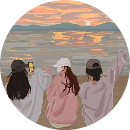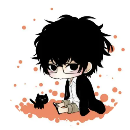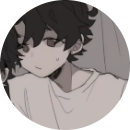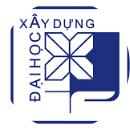How do people celebrate the New year festival in Vietnam ?

Những câu hỏi liên quan
Read the article and answer the questions.A Famous Festival in Vietnam In Vietnam, people celebrate many different festivals each year. The biggest festival in Vietnam is Tết. This celebrates the beginning of the Lunar New Year. Vietnamese people have to prepare a lot for this festival. Before Tết, people buy fruits and flowers from the market and decorate their houses. Most people buy a special tree with lots of flowers. In the north of Vietnam, people buy peach trees with pink flowers. In...
Đọc tiếp
Read the article and answer the questions.
A Famous Festival in Vietnam
In Vietnam, people celebrate many different festivals each year. The biggest festival in Vietnam is Tết. This celebrates the beginning of the Lunar New Year. Vietnamese people have to prepare a lot for this festival. Before Tết, people buy fruits and flowers from the market and decorate their houses. Most people buy a special tree with lots of flowers. In the north of Vietnam, people buy peach trees with pink flowers. In the south, people buy apricot trees with yellow flowers. Everyone cleans their house before Tết. This is very important because you shouldn't clean it during Tết. During Tết, people visit their family and friends. Few people go to school or work. Children wear new clothes and get lucky money. It's a great time to watch lion dances and fireworks. Everyone is happy and excited about the New Year. Vietnamese people love to celebrate this festival.
1. Do people celebrate many different festivals each year?
_______________________________________________________________________________
2. Is Tết the biggest festival in Vietnam?
_______________________________________________________________________________
3. What do people often do before Tết?
_______________________________________________________________________________
4. What do people often do during Tết?
_______________________________________________________________________________
5. In the North of Vietnam, what type of tree do people buy?
_______________________________________________________________________________
A famous Festival in Viet Nam A. Cường Nguyễn, October 14In Vietnam, people celebrate many different festival each year. The biggest festival in Vietnam is Tet. Thiscelebrates the beginning of the Lunar New Year. Vietnamese people have to prepare a lot for this festival. BeforeTet, people buy fruits and flowers from the market and decorate their houses. Most people buy a special tree withlots of flowers. In the north of Vietnam, people buy peach trees with pink flowers. In the south, people buy...
Đọc tiếp
A famous Festival in Viet Nam
A. Cường Nguyễn, October 14
In Vietnam, people celebrate many different festival each year. The biggest festival in Vietnam is Tet. This
celebrates the beginning of the Lunar New Year. Vietnamese people have to prepare a lot for this festival. Before
Tet, people buy fruits and flowers from the market and decorate their houses. Most people buy a special tree with
lots of flowers. In the north of Vietnam, people buy peach trees with pink flowers. In the south, people buy apricot
trees with yellow flowers. Everyone cleans their house before Tet, This is very important because you shouldn’t
clean it during Tet. During Tet, people visit their family and friends. Few people go to school or work. Children
wear new clothes and get lucky money. It’s a great time to watch lion dances and fireworks. Everyone is happy and
excited about the New Year. Vietnamese people love to celebrate this festival.
61. There are many different festivals each year in Vietnam.
_________
62. Before Tet, people buy fruits and flowers from the market and decorate their houses. _________
63. In the north, people buy apricot trees with yellow flowers.
_________
64. Children wear new clothes and get lucky money during Tet.
_________
65. People clean and decorate their house __________ Tet
A. in
B. during
C. after
D. before
66. What does the passage mainly discuss?
A. Christmas
B. Halloween
C. Lunar New Year
D. Mid-Autumn Festival
61. There are many different festivals each year in Vietnam.
____T_____
62. Before Tet, people buy fruits and flowers from the market and decorate their houses. ____T_____
63. In the north, people buy apricot trees with yellow flowers.
_____F____
64. Children wear new clothes and get lucky money during Tet.
___T______
65. People clean and decorate their house __________ Tet
A. in
B. during
C. after
D. before
66. What does the passage mainly discuss?
A. Christmas
B. Halloween
C. Lunar New Year
D. Mid-Autumn Festival
Đúng 1
Bình luận (0)
Dịch sang Tiếng Việt: A famous festival in Vietnam(dịch thêm câu này nha) In Vietnam, people celebrate many different festival each year. The biggest festival in Vietnam is Tết. This celebrates the beginning of the Lunar New Year. Vietnamese people have to prepare a lot of this festival. Before Tết, people buy fruits and flowers from the market and decorate their houses. Most people buy a special tree with lots of flowers. In the north of Vietnam, people buy peach trees with pink flowers. I...
Đọc tiếp
Dịch sang Tiếng Việt: A famous festival in Vietnam(dịch thêm câu này nha)
In Vietnam, people celebrate many different festival each year. The biggest festival in Vietnam is Tết. This celebrates the beginning of the Lunar New Year. Vietnamese people have to prepare a lot of this festival. Before Tết, people buy fruits and flowers from the market and decorate their houses. Most people buy a special tree with lots of flowers. In the north of Vietnam, people buy peach trees with pink flowers. In the south, people buy apricot trees with yellow flowers. Everyone cleans their house before Tết. This is very important because you shouldn | t clean it during Tết. During Tết, people visit their family and friends. Few people go to school or work. Children wear new clothes and get lucky money. It is a great time to watch lion dances and fireworks. Everyone is happy and excited about the New Year. Vietnamese people love to celebrate this festival.
Giiusp mình voiwsiiiiiii,...
Một lễ hội nổi tiếng ở Việt Nam
Ở Việt Nam, mọi người tổ chức nhiều lễ hội khác nhau mỗi năm. Lễ hội lớn nhất ở Việt Nam là Tết. Điều này kỷ niệm sự khởi đầu của Tết Nguyên đán. Người Việt Nam phải chuẩn bị rất nhiều cho lễ hội này. Trước Tết, mọi người mua hoa quả chợ về trang trí nhà cửa. Hầu hết mọi người mua một cây đặc biệt với rất nhiều hoa. Ở miền Bắc nước ta, người ta mua những cây đào có hoa màu hồng. Ở miền Nam, người ta mua mai nở hoa vàng. Mọi người dọn dẹp nhà cửa trước Tết. Điều này rất quan trọng vì bạn không nên | t dọn dẹp nó trong ngày Tết. Trong ngày Tết, mọi người đi thăm gia đình và bạn bè của họ. Ít người đi học hoặc đi làm. Trẻ em mặc quần áo mới và được lì xì. Đó là thời điểm tuyệt vời để xem múa lân và bắn pháo hoa. Tất cả mọi người đều vui vẻ và háo hức về ngày Tết. Người Việt Nam rất thích tổ chức lễ hội này.
Đúng 3
Bình luận (1)
Một lễ hội nổi tiếng ở Việt Nam
Ở Việt Nam, mọi người tổ chức nhiều lễ hội khác nhau mỗi năm. Lễ hội lớn nhất ở Việt Nam là Tết. Điều này kỷ niệm sự khởi đầu của Tết Nguyên đán. Người Việt Nam phải chuẩn bị rất nhiều cho lễ hội này. Trước Tết, mọi người mua hoa quả chợ về trang trí nhà cửa. Hầu hết mọi người mua một cây đặc biệt với rất nhiều hoa. Ở miền Bắc nước ta, người ta mua những cây đào có hoa màu hồng. Ở miền Nam, người ta mua mai nở hoa vàng. Mọi người dọn dẹp nhà cửa trước Tết. Điều này rất quan trọng vì bạn không nên | t dọn dẹp nó trong ngày Tết. Trong ngày Tết, mọi người đi thăm gia đình và bạn bè của họ. Ít người đi học hoặc đi làm. Trẻ em mặc quần áo mới và được lì xì. Đó là thời điểm tuyệt vời để xem múa lân và bắn pháo hoa. Tất cả mọi người đều vui vẻ và háo hức về ngày Tết. Người Việt Nam rất thích tổ chức lễ hội này.
Đúng 0
Bình luận (0)
B. Read the article and answer the questions.A Famous Festival in VietnamIn Vietnam, people celebrate many different festivals each year. The biggest festival in Vietnam is Tết. This celebrates the beginning of the Lunar New Year. Vietnamese people have to prepare a lot for this festival. Before Tết, people buy fruits and flowers from the market and decorate their houses. Most people buy a special tree with lots of flowers. In the north of Vietnam, people buy peach trees with pink flowers. In th...
Đọc tiếp
B. Read the article and answer the questions.
A Famous Festival in Vietnam
In Vietnam, people celebrate many different festivals each year. The biggest festival in Vietnam is Tết. This celebrates the beginning of the Lunar New Year. Vietnamese people have to prepare a lot for this festival. Before Tết, people buy fruits and flowers from the market and decorate their houses. Most people buy a special tree with lots of flowers. In the north of Vietnam, people buy peach trees with pink flowers. In the south, people buy apricot trees with yellow flowers. Everyone cleans their house before Tết. This is very important because you shouldn't clean it during Tết. During Tết, people visit their family and friends. Few people go to school or work. Children wear new clothes and get lucky money. It's a great time to watch lion dances and fireworks. Everyone is happy and excited about the New Year. Vietnamese people love to celebrate this festival.
Questions:
1. Do people celebrate many different festivals each year?
2. Is Tết the biggest festival in Vietnam?
3. What do people often do before Tết?
4. What do people often do during Tết?
5. In the North of Vietnam, what type of tree do people buy?
6. In the South of Vietnam, what type of tree do people buy?
B. Read the article and answer the questions.
A Famous Festival in Vietnam
In Vietnam, people celebrate many different festivals each year. The biggest festival in Vietnam is Tết. This celebrates the beginning of the Lunar New Year. Vietnamese people have to prepare a lot for this festival. Before Tết, people buy fruits and flowers from the market and decorate their houses. Most people buy a special tree with lots of flowers. In the north of Vietnam, people buy peach trees with pink flowers. In the south, people buy apricot trees with yellow flowers. Everyone cleans their house before Tết. This is very important because you shouldn't clean it during Tết. During Tết, people visit their family and friends. Few people go to school or work. Children wear new clothes and get lucky money. It's a great time to watch lion dances and fireworks. Everyone is happy and excited about the New Year. Vietnamese people love to celebrate this festival.
Questions:
1. Do people celebrate many different festivals each year?
=> Yes,they do.
2. Is Tết the biggest festival in Vietnam?
=> Yes,it is.
3. What do people often do before Tết?
=> Before Tet, people buy fruits and flowers from the market and decorate their houses. Most people buy a special tree with lots of flowers.
4. What do people often do during Tết?
=> People buy peach trees with pink flowers in the North of Vietnam.
5. In the North of Vietnam, what type of tree do people buy?
=> In the north of Vietnam, people buy peach trees with pink flowers.
6. In the South of Vietnam, what type of tree do people buy?
=> In the south, people buy apricot trees with yellow flowers.
Đúng 0
Bình luận (1)
A Famous Festival in VietnamIn Vietnam, people celebrate many different festivals each year. This biggest festival in Vietnam is Tết. This celebrates the beginning of the Lunar New Year. Vietnamese people have to prepare a lot for this festival. Before Tết, people buy fruits and flowers from the market and decorate their houses. Most people buy a special tree with lots of flowers. In the north of Vietnam, people buy peach trees with pink flowers. In the south, people buy apricot trees with yello...
Đọc tiếp
A Famous Festival in Vietnam
In Vietnam, people celebrate many different festivals each year. This biggest festival in Vietnam is Tết. This celebrates the beginning of the Lunar New Year. Vietnamese people have to prepare a lot for this festival. Before Tết, people buy fruits and flowers from the market and decorate their houses. Most people buy a special tree with lots of flowers. In the north of Vietnam, people buy peach trees with pink flowers. In the south, people buy apricot trees with yellow flowers. Everyone cleans their house before Tết. This is very important because you shouldn’t clean it during Tết. During Tết, people visit their family and friends. Few people go to school or work. Children wear new clothes and get lucky money. It’s a great time to watch lion dances and fireworks. Everyone is happy and excited about the New Year. Vietnamese people love to celebrate this festival.
1. What do people usually do before Tết?
2. What do people do during Tết?
3. Do people celebrate many festivals in Vietnam?
4. What do children do?
5. Should everyone clean their houses during Tết?
1. People usually buy fruits,special tree,flowers from the market,clean and decorate their house.
2. People visit their family and friends. Few people go to school or work.
3. Yes,the people celebrate many festivals in Vietnam.
4. They wear new clothes and get lucky money.
5. No,they shouldn't.
Chúc bạn học tốt nha !
Đúng 1
Bình luận (0)
1.people buy fruits and flowers from the market,clean and decorate their houses
2.people visit their family and friends,few people go to school or work
3.Children wear new clothes and get lucky money
4.no ,they shoudn't
Đúng 0
Bình luận (1)
Write a paragraph about how people in Vietnam celebrate the New Year.
Refer:
Tet is the most important festival of the Vietnamese calendar. It marks the beginning of the lunar new year, which is celebrated inChina as well. Festivities occur throughout the country, but this is a family holiday and many of the traditions of observance occur in the home. The official holiday lasts three days, but celebrations continue for at least the first week of the new year.
Preparations begin about a week before the new year. Homes are cleaned out in the hopes of getting rid of the past year's bad luck, and some families go so far as to repaint their house's exterior. It also is believed to be lucky to buy new clothes and get a fresh haircut. At midnight on New Year's Eve, Vietnamese families conduct the ritual Le Tru Tich, which involves gongs, firecrackers and other noisy items to chase out the old year and ring in the new.
On New Year's Day, most families meet to exchange gifts and have a traditional meal, and also perform a ceremony to appease the kitchen god. Homes are decorated with the hoa mai flower and all thoughts of sadness are supposed to be avoided. Children are encouraged not to fight or cry and anyone in mourning is shunned because it is bad luck to be associated with death on New Year's Day. Many families plant a new year's tree in front of the house and wrap it with lucky red paper. The tree is removed at the end of the first week of the new year. After the family meal, many Vietnamese attend the local pagoda to worship ancestors.In major cities, such as Ho Chi Minh and Hanoi, Tet celebrations are more similar to new year celebrations in western countries. People attend events in dance clubs and bars. This is a time of enjoyment and there is a lot of eating and drinking involved in the celebrations. Fireworks are set off to scare away the evil spirit Na A. Stores and neighborhoods decorate with colored lights and red banners. Food is an important part of the Tet celebrations. The Vietnamese believe that what a person does on New Year's Day dictates the course of the rest of the year, and eating a lot represents the hope that no one will go hungry in the coming year. In the days leading up to the holiday, the Vietnamese traditionally give gifts of food to family members and friends. The traditional meal includes foods such as bang, a bamboo and pork soup; bang chung, a sticky rice cake filled with pork and beans; and orange sticky rice. Even the ancestors are given food gifts. Families leave a five fruit tray at the altar. With the exception of the hospitality industry, most businesses close down for the entire week of Tet celebrations. Because the holiday is an important time for Vietnamese families to spend time together, travel in Vietnam is as hectic as Christmas travel is in many other parts of the world. Any travel plans within the country must be arranged well in advance. Since most of the celebration takes place in the homes of friends and family, visitors might feel left out for most of the week unless they have close friends or family in Vietnam.
Đúng 0
Bình luận (0)
write two paragraphs about how people in vietnam and in japan celebrate the new year
cứu mình
Xem chi tiết
Nhật Bản nè:
New Year (shogatsu or oshogatsu) is the most important holiday in Japan. Most businesses shut down from January 1 to January 3, and families typically gather to spend the days together.
Years are traditionally viewed as completely separate, with each new year providing a fresh start. Consequently, all duties are supposed to be completed by the end of the year, whilebonenkai parties ("year forgetting parties") are held with the purpose of leaving the old year's worries and troubles behind.
Homes and entrance gates are decorated with ornaments made of pine, bamboo and plum trees, and clothes and houses are cleaned.
On New Year's eve, toshikoshi soba (buckwheat noodles), symbolizing longevity, are served. A more recent custom is watching the music show "kohaku uta gassen", a highly popular television program featuring many of Japan's most famous J-pop and enka singers in spectacular performances.
January 1 is a very auspicious day, best started by viewing the new year's first sunrise (hatsu-hinode), and traditionally believed to be representative for the whole year that has just commenced. Therefore, the day is supposed be full of joy and free of stress and anger, while everything should be clean and no work should be done.
It is a tradition to visit a shrine or temple during shogatsu (hatsumode). The most popular temples and shrines, such as Tokyo's Meiji Shrine, attract several million people during the three days. Most impressive are such visits at the actual turn of the year, when large temple bells are rung at midnight.
Various kinds of special dishes are served during shogatsu. They include osechi ryori, otoso (sweetenedrice wine) and ozoni (a soup with mochi).
There are also a few games traditionally played on New Year, however, their popularity has decreased in recent times. Hanetsuki (Japanese badminton), takoage (kite flying), and karuta (a card game) are some of them.
A very popular custom is the sending of New Year's cards, which are specially marked to be delivered on January 1. It is not uncommon for one person to send out several dozens of cards to friends, relatives and co-workers.
Visiting Japan during the New Year's holidays can be both rewarding and frustrating. Elsewhere on the site is a page summarizing the pros and cons of visiting Japan during New Year.
There are also a few games traditionally played on New Year, however, their popularity has decreased in recent times. Hanetsuki (Japanese badminton), takoage (kite flying), and karuta (a card game) are some of them.
A very popular custom is the sending of New Year's cards, which are specially marked to be delivered on January 1. It is not uncommon for one person to send out several dozens of cards to friends, relatives and co-workers.
Visiting Japan during the New Year's holidays can be both rewarding and frustrating. Elsewhere on the site is a page summarizing the pros and cons of visiting Japan during New Year.
Việt Nam nè :
Tet is the most important festival of the Vietnamese calendar. It marks the beginning of the lunar new year, which is celebrated inChina as well. Festivities occur throughout the country, but this is a family holiday and many of the traditions of observance occur in the home. The official holiday lasts three days, but celebrations continue for at least the first week of the new year.
Preparations begin about a week before the new year. Homes are cleaned out in the hopes of getting rid of the past year's bad luck, and some families go so far as to repaint their house's exterior. It also is believed to be lucky to buy new clothes and get a fresh haircut. At midnight on New Year's Eve, Vietnamese families conduct the ritual Le Tru Tich, which involves gongs, firecrackers and other noisy items to chase out the old year and ring in the new.
On New Year's Day, most families meet to exchange gifts and have a traditional meal, and also perform a ceremony to appease the kitchen god. Homes are decorated with the hoa mai flower and all thoughts of sadness are supposed to be avoided. Children are encouraged not to fight or cry and anyone in mourning is shunned because it is bad luck to be associated with death on New Year's Day. Many families plant a new year's tree in front of the house and wrap it with lucky red paper. The tree is removed at the end of the first week of the new year. After the family meal, many Vietnamese attend the local pagoda to worship ancestors.In major cities, such as Ho Chi Minh and Hanoi, Tet celebrations are more similar to new year celebrations in western countries. People attend events in dance clubs and bars. This is a time of enjoyment and there is a lot of eating and drinking involved in the celebrations. Fireworks are set off to scare away the evil spirit Na A. Stores and neighborhoods decorate with colored lights and red banners.
Food is an important part of the Tet celebrations. The Vietnamese believe that what a person does on New Year's Day dictates the course of the rest of the year, and eating a lot represents the hope that no one will go hungry in the coming year. In the days leading up to the holiday, the Vietnamese traditionally give gifts of food to family members and friends. The traditional meal includes foods such as bang, a bamboo and pork soup; bang chung, a sticky rice cake filled with pork and beans; and orange sticky rice. Even the ancestors are given food gifts. Families leave a five fruit tray at the altar.
With the exception of the hospitality industry, most businesses close down for the entire week of Tet celebrations. Because the holiday is an important time for Vietnamese families to spend time together, travel in Vietnam is as hectic as Christmas travel is in many other parts of the world. Any travel plans within the country must be arranged well in advance. Since most of the celebration takes place in the homes of friends and family, visitors might feel left out for most of the week unless they have close friends or family in Vietnam.
Đúng 0
Bình luận (4)
a. Read the article and underline all the festival activities.(Đọc bài báo và gạch dưới những hoạt động lễ hội.)A Famous Festival in VietnamCường Nguyễn, October 14In Vietnam, people celebrate many different festivals each year. The biggest festival in Vietnam is Tết. This celebrates the beginning of the Lunar New Year. Vietnamese people have to prepare a lot for this festival. Before Tết, people buy fruits and flowers from the market and decorate their houses. Most people buy a special tree wit...
Đọc tiếp
a. Read the article and underline all the festival activities.
(Đọc bài báo và gạch dưới những hoạt động lễ hội.)
A Famous Festival in Vietnam
Cường Nguyễn, October 14
In Vietnam, people celebrate many different festivals each year. The biggest festival in Vietnam is Tết. This celebrates the beginning of the Lunar New Year. Vietnamese people have to prepare a lot for this festival. Before Tết, people buy fruits and flowers from the market and decorate their houses. Most people buy a special tree with lots of flowers. In the north of Vietnam, people buy peach trees with pink flowers. In the south, people buy apricot trees with yellow flowers. Everyone cleans their house before Tết. This is very important because you shouldn't clean it during Tết. During Tết, people visit their family and friends. Few people go to school or work. Children wear new clothes and get lucky money. It's a great time to watch lion dances and fireworks. Everyone is happy and excited about the New Year. Vietnamese people love to celebrate this festival.
A Famous Festival in Vietnam
Cường Nguyễn, October 14
In Vietnam, people celebrate many different festivals each year. The biggest festival in Vietnam is Tết. This celebrates the beginning of the Lunar New Year. Vietnamese people have to prepare a lot for this festival. Before Tết, people buy fruits and flowers from the market and decorate their houses. Most people buy a special tree with lots of flowers. In the north of Vietnam, people buy peach trees with pink flowers. In the south, people buy apricot trees with yellow flowers. Everyone cleans their house before Tết. This is very important because you shouldn't clean it during Tết. During Tết, people visit their family and friends. Few people go to school or work. Children wear new clothes and get lucky money. It's a great time to watch lion dances and fireworks. Everyone is happy and excited about the New Year. Vietnamese people love to celebrate this festival.
Đúng 1
Bình luận (0)
Tạm dịch bài báo:
Một lễ hội nổi tiếng ở Việt Nam
Cường Nguyễn, ngày 14 tháng 10
Ở Việt Nam, mọi người tổ chức nhiều lễ hội khác nhau mỗi năm. Lễ hội lớn nhất ở Việt Nam là Tết. Đây là dịp mừng đầu năm. Người Việt Nam phải chuẩn bị rất nhiều cho lễ hội này. Trước Tết, mọi người mua hoa quả chợ về trang trí nhà cửa. Hầu hết mọi người mua một cây đặc biệt với rất nhiều hoa. Ở miền Bắc nước ta, người ta mua những cây đào có hoa màu hồng. Ở miền Nam, người ta mua mai nở hoa vàng. Mọi người dọn dẹp nhà cửa trước Tết. Điều này rất quan trọng vì bạn không nên dọn dẹp trong ngày Tết. Trong ngày Tết, mọi người đến thăm gia đình và bạn bè của họ. Ít người đi học hoặc đi làm. Trẻ em mặc quần áo mới và được lì xì. Đó là thời điểm tuyệt vời để xem múa lân và bắn pháo hoa. Tất cả mọi người đều vui vẻ và háo hức về ngày Tết. Người Việt Nam rất thích tổ chức lễ hội này.
Đúng 0
Bình luận (0)
Read the following passage then do the tasks.Tết, or Lunar New Year is the most important festival of Vietnamese people. It marks the beginning of the Lunar year, which is celebrated in China as well. Tet in Vietnam usually drops in the late of January or early February. At Tết, festivals are held throughout the country, and this is a family holiday, too. Before Tết, Vietnamese families usually make Chưng cake or Tét cake, the traditional cakes of Việtnam. They also buy lots of cakes and candies...
Đọc tiếp
Read the following passage then do the tasks.
Tết, or Lunar New Year is the most important festival of Vietnamese people. It marks the beginning of the Lunar year, which is celebrated in China as well. Tet in Vietnam usually drops in the late of January or early February. At Tết, festivals are held throughout the country, and this is a family holiday, too. Before Tết, Vietnamese families usually make Chưng cake or Tét cake, the traditional cakes of Việtnam. They also buy lots of cakes and candies. Children often give best wishes to the old people or parents then get lucky money. The official holiday lasts three days, but celebrations continue for at least the first week of the new year.
* Answer the questions:
1. What is the other name of Tết?
............................................................................................................................................
2. When does Tết drop?
............................................................................................................................................
3. Do the celebrations last three days?
............................................................................................................................................
4. What do the children often give to the old or their parents?
...........................................................................................................................................
1. What is the other name of Tết?
...............................................Lunar New Year.............................................................................................
2. When does Tết drop?
...................................Tet in Vietnam usually drops in the late of January or early February. .........................................................................................................
3. Do the celebrations last three days?
.............................................Yes...............................................................................................
4. What do the children often give to the old or their parents?
...................................................best wishes ........................................................................................
Đúng 5
Bình luận (0)






























